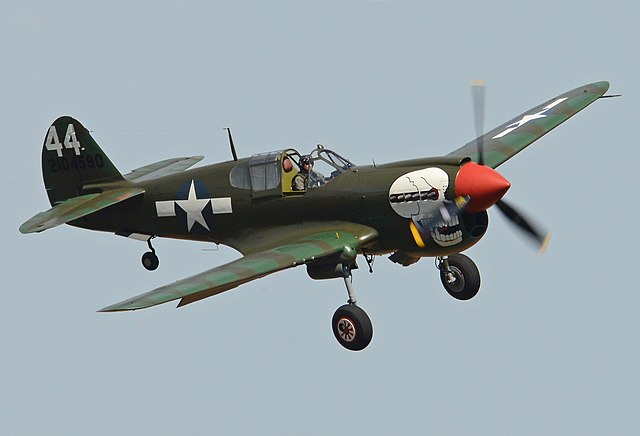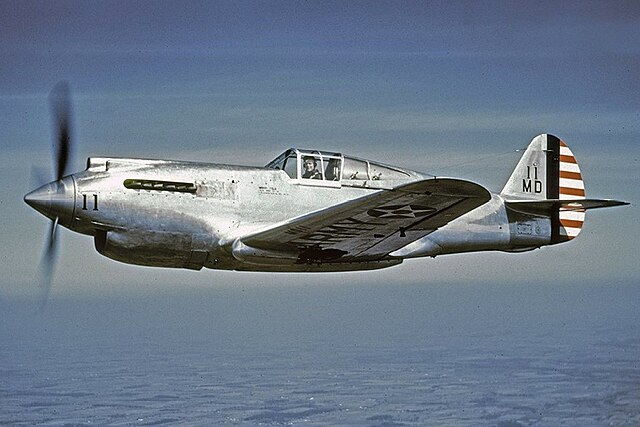Andrew William "Nicky" Barr, was a member of the Australian national rugby union team, who became a fighter ace in the Royal Australian Air Force (RAAF) during World War II. He was credited with 12 aerial victories, all scored flying the Curtiss P-40 fighter. Born in New Zealand, Barr was raised in Victoria and first represented the state in rugby in 1936. Selected to play for Australia in the United Kingdom in 1939, he had just arrived in England when the tour was cancelled following the outbreak of war. He joined the RAAF in 1940 and was posted to North Africa with No. 3 Squadron in September 1941. The squadron's highest-scoring ace, he attained his first three victories in the P-40 Tomahawk and the remainder in the P-40 Kittyhawk.
Barr during World War II
RAAF P-40 Tomahawk in North Africa
Barr has his temperature taken by a medical officer following his return to base three days after being shot down behind enemy lines, January 1942.
Barr in London, April 1944
The Curtiss P-40 Warhawk is an American single-engined, single-seat, all-metal fighter-bomber that first flew in 1938. The P-40 design was a modification of the previous Curtiss P-36 Hawk which reduced development time and enabled a rapid entry into production and operational service. The Warhawk was used by most Allied powers during World War II, and remained in frontline service until the end of the war. It was the third most-produced American fighter of World War II, after the North American P-51 Mustang and Republic P-47 Thunderbolt; by November 1944, when production of the P-40 ceased, 13,738 had been built, all at Curtiss-Wright Corporation's main production facilities in Buffalo, New York.
Curtiss P-40 Warhawk
Curtiss XP-40 "11" used for test purposes by the Materiel Division of the U.S. Army Air Corps
A three-quarter view of a P-40B, X-804 (s/n 39-184) in flight. This aircraft served with an advanced training unit at Luke Field, Arizona.
Evidence of the P-40's durability: in 1944 F/O T. R. Jacklin (pictured) flew this No. 75 Squadron RAAF P-40N-5 more than 200 mi (322 km) after the loss of the port aileron and 25% of its wing area, due to a mid-air collision with another P-40N-5.








